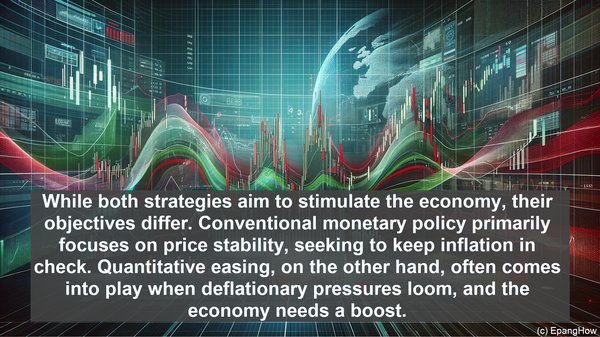Introduction: Navigating the Monetary Landscape
Welcome, ladies and gentlemen, to this insightful exploration of monetary policy. As economies evolve, so do the tools central banks employ to manage them. Today, we’ll unravel the differences between two key strategies: quantitative easing and conventional monetary policy.

Conventional Monetary Policy: The Traditional Approach
For decades, central banks have relied on conventional monetary policy. This strategy involves adjusting interest rates to influence borrowing costs, spending, and investment. By raising rates, central banks can curb inflation, while lowering them stimulates economic activity. It’s a delicate balancing act, often requiring fine-tuning to achieve desired outcomes.
Quantitative Easing: A Response to Extraordinary Circumstances
The 2008 financial crisis presented a unique challenge. Conventional monetary policy alone seemed insufficient to revive struggling economies. Enter quantitative easing. This approach involves the central bank purchasing government bonds and other securities from the market. By doing so, they inject liquidity, aiming to lower long-term interest rates and encourage lending and investment.
Objectives: Divergent Goals
While both strategies aim to stimulate the economy, their objectives differ. Conventional monetary policy primarily focuses on price stability, seeking to keep inflation in check. Quantitative easing, on the other hand, often comes into play when deflationary pressures loom, and the economy needs a boost.

Mechanisms: Varying Approaches
In conventional monetary policy, the central bank adjusts short-term interest rates, typically through open market operations. By buying or selling government securities, they influence the money supply and, consequently, borrowing costs. Quantitative easing, as the name suggests, involves a more substantial purchase of long-term securities. This not only injects liquidity but also aims to improve market sentiment and confidence.
Potential Consequences: Weighing the Risks
Both strategies have potential implications. Conventional monetary policy, if not carefully calibrated, can lead to inflation or deflation. Quantitative easing, while effective in times of crisis, can raise concerns about excessive liquidity, asset price inflation, or even currency devaluation. Central banks must navigate these risks, often employing a mix of strategies to maintain stability.
